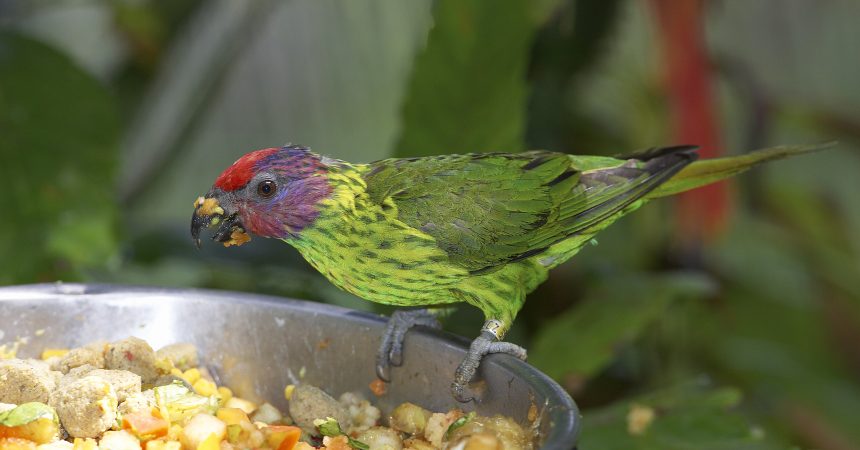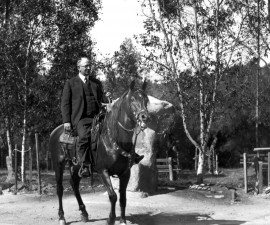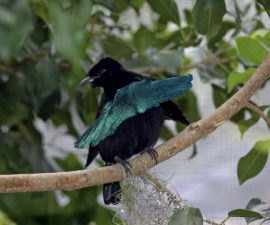The 100-year history of the San Diego Zoo is made up of tales of perseverance and ingenuity when it came to meeting the needs of the animals in its care. In the early years, one of the greatest challenges was securing food for the animals. Carnivores needed meat, herbivores needed the right types of grass/hay, and birds and other animals required vegetables and fruit. With so many different dietary needs, the young and growing zoo needed a way to organize and properly store the food. We learned as we grew, developing and continuing to refine a world-class system for meeting the nutritional needs of the animals in order to help them thrive.
The Great Depression was a difficult time for the young Zoo, but it also brought opportunity through the Works Progress Administration (WPA). By 1937, WPA workers had constructed a Forage Warehouse at the Zoo, which is still standing today! By early 1943, the Zoo had adjusted to the exigencies of the wartime operation and several Victory Gardens were set up on Zoo grounds. The forage crew cultivated as much food as possible; chard, alfalfa, carrots, sweet potatoes, and other crops formed a majority of the Zoo menu. San Diego’s exquisite climate allows for wide range of “exotic” shrubs and trees to thrive, and these were—and still are—utilized as part of animal diets, as well. As the variety of creatures living at the Zoo grew, the animals’ menu grew in complexity. For example, primates with medical conditions needed specific diet items, such as avocado. Snakes and other reptiles required whole prey items. Tortoises enjoyed cactus pads and giraffe liked dried onions and acacia limbs.
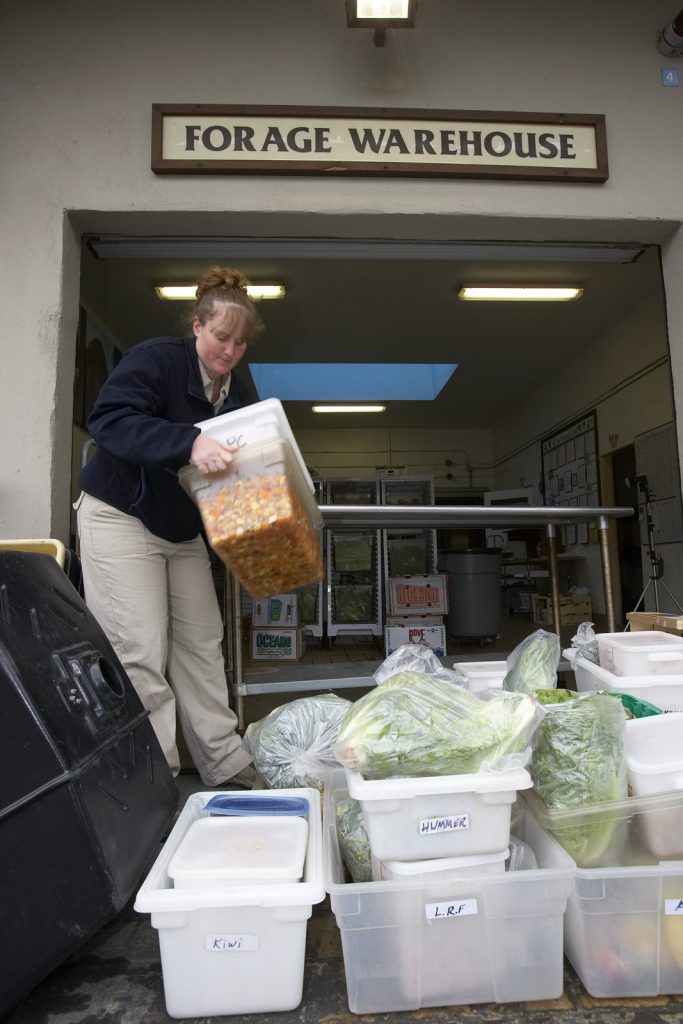
Working from a carefully monitored database, food is gathered and sent to keeper areas in the Zoo. The San Diego Zoo Safari Park has their own forage facility to ensure the freshness of the animals’ food.
Today, the Forage Warehouse remains the Zoo’s main animal food distribution center, and is a division of the Animal Nutrition Services (ANS). At one time, guidelines for the animals’ diets were written out and posted on boards, with information passed verbally. Currently, all animals have specific diet sheets present in a computerized database that provides the diet items and amounts in a menu-like format. Each animal’s diet is kept in the diet database. From there, the forage team uses a spreadsheet to calculate the amount of food items allotted to each area of the Zoo. Diets are updated easily if animals are moved within the Zoo grounds. The nutritional services supervisor is responsible for maintaining the spreadsheets and making sure everyone gets their proper diet.
Most of our vendors and suppliers are on contract. We buy in bulk to ensure we are paying the best price and to keep within our budget of slightly over $1,500,000 per year: about $4,300 daily with $1.08 per animal, per day. This feeds all 4,000 animals that call the Zoo home. All the food purchased is grocery store/restaurant-quality, and the USDA inspects our facility twice a year.
We order all meat diets from vendors who prepackage beef, pork, and other assorted meat products (bones, spleens, hearts, rabbits, and mice). We have utilized a variety of commercial meat products over the years and tried many different brands. Recently, the zoo has gone back to buying commercial products that include horsemeat to provide the most balanced diets for our strictly carnivorous residents. Some carnivores occasionally receive large beef bones that are stripped of meat, but still contain marrow, encouraging them to exercise their jaws—and natural instincts—to reach the goodness inside.
Our animals adapted to eating pre-killed food. However, the items are not skinned and prepared. We do obtain live rodents for the Reptile House, which are euthanized just before feeding. We don’t feed large live prey because they could injure predators or escape.
Items fed live include insects (from fruit flies to harvester ants, termites and springtails), worms ranging from waxworms to hornworms, and fish. Some of the latter are stored in a freezer then thawed before feeding, but we also provide live fish for many animals such as fishing cats, bears, otters, and turtles.
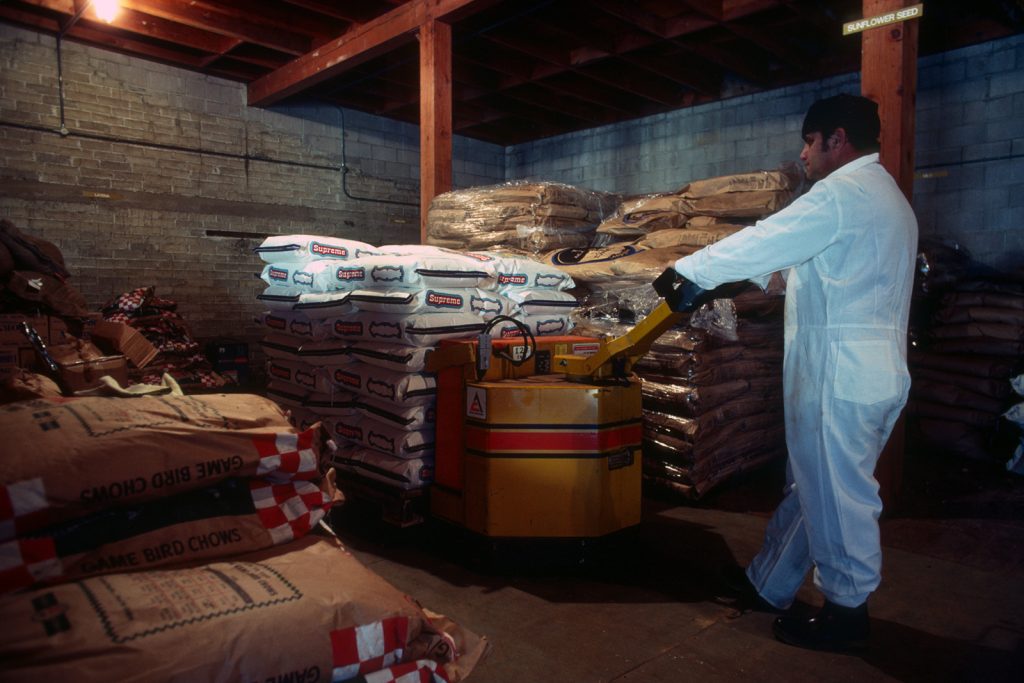
Pellet-diets and commercial feeds are kept in the Grain Room.
Some animals are fed a specially designed pellet, which meets both nutritional and palatability requirements. They even come in flavors—our parrots get “jungle mix” flavor with red apple and chili powder, while the “red apple” pellet is a favorite of quite a few monkeys! Keepers “serve” fresh fruits and vegetables along with the pellets to provide a well-balanced diet.
In our hay barn, Sudan grass, Bermuda grass, and alfalfa hay all regularly go through a quality-control inspection. Core samples are taken and our research associate sends them to a lab for nutritional analysis. Over the years, we’ve discovered that the dietary requirements of some animals dictated the need for specially designed dry foods, which are stored in the grain room. These include things like commercial feeds and special pellets. The Zoo’s vets and nutritionists have control over the pellets’ production and can alter composition when necessary. Proper nutrition plays a key role in animal welfare and leads to decreased risk of disease. Captive diets are essential in the overall health of an individual and animal collection.
In Part II, we’ll take a closer look at zoo nutritionists and their role in animal care.
Dave Szabo is the manager of Nutritional Services at the San Diego Zoo.
Debbie Lowe is the supervisor of Nutritional Services at the San Diego Zoo.

